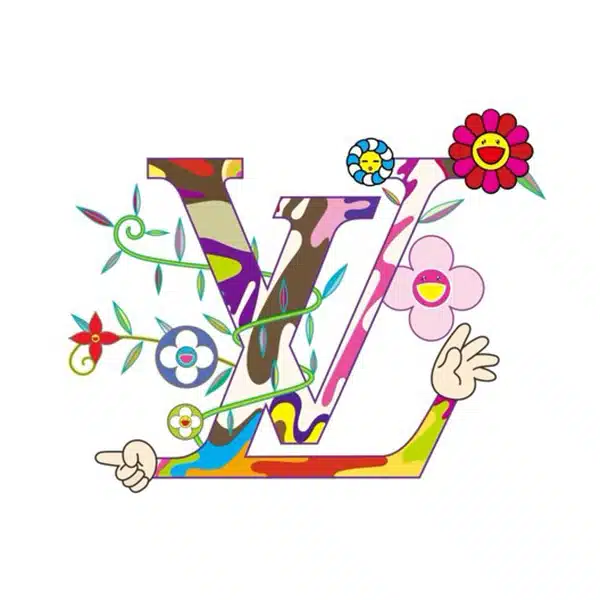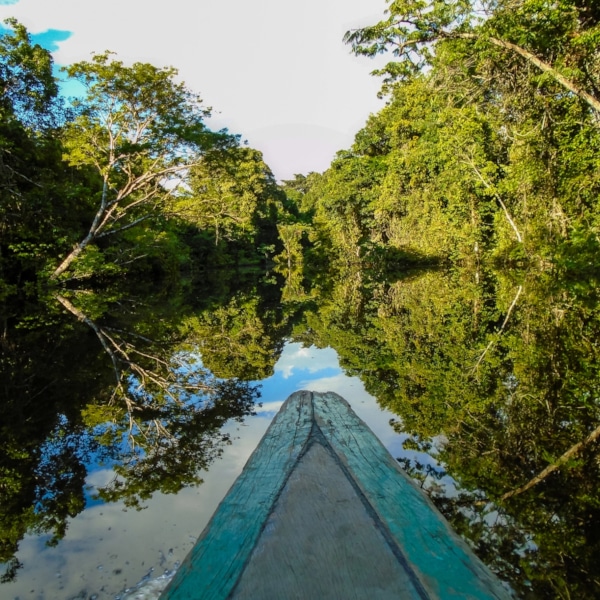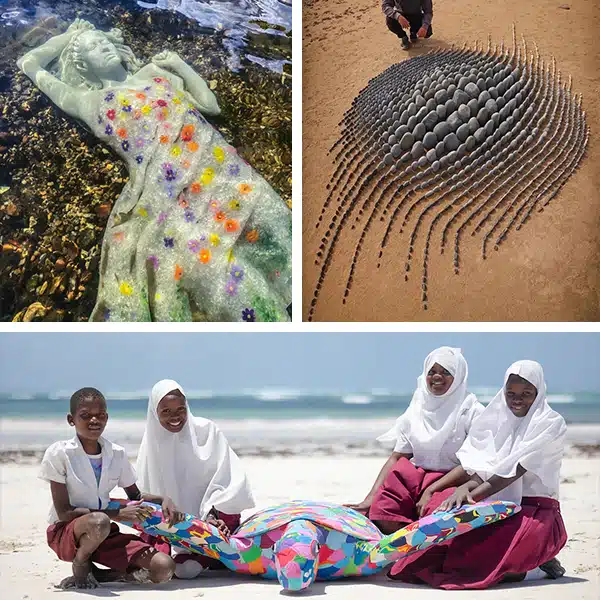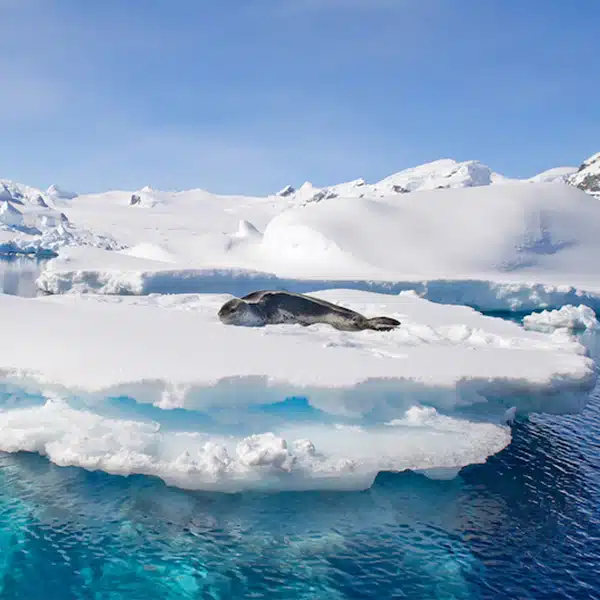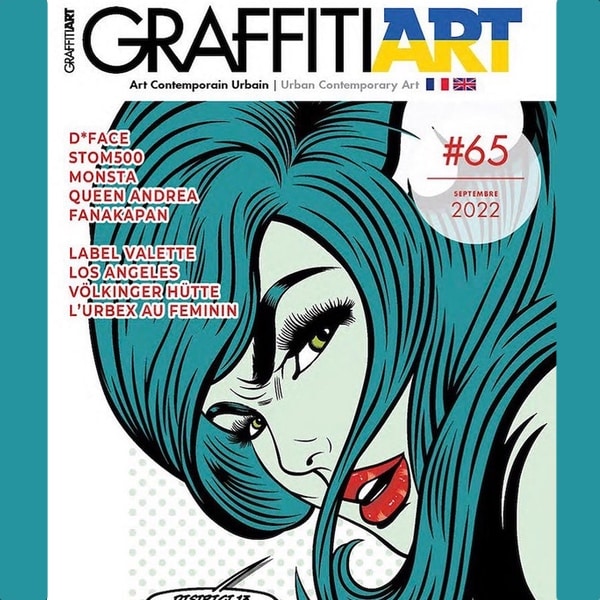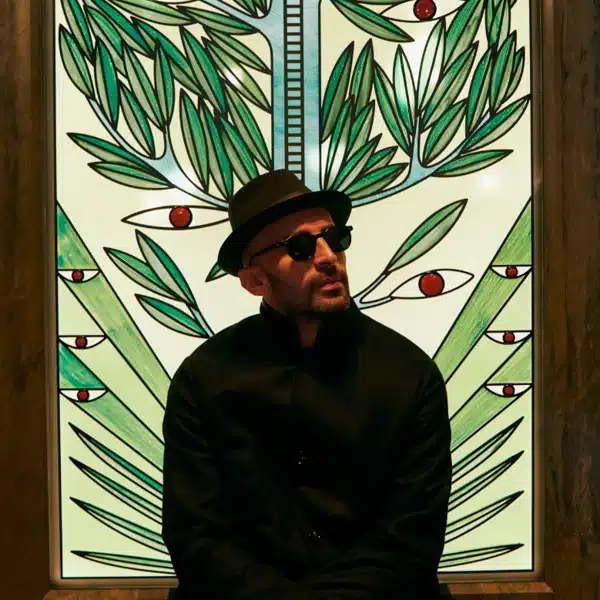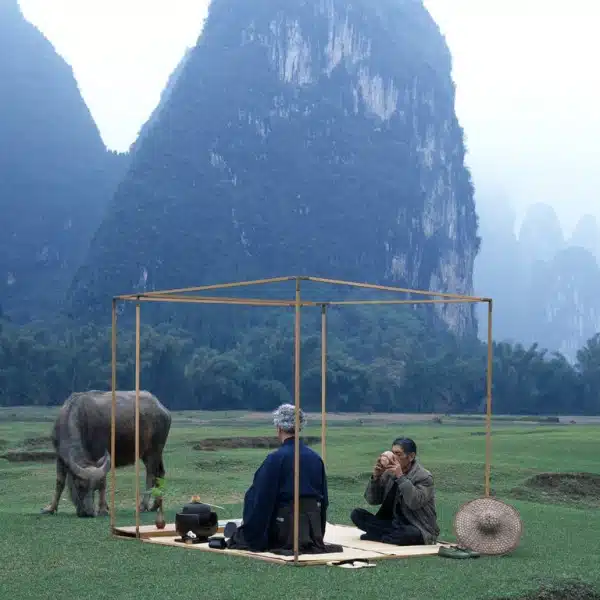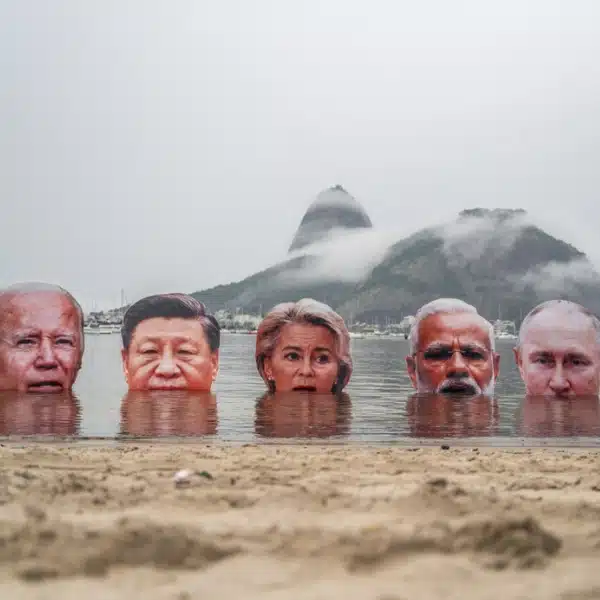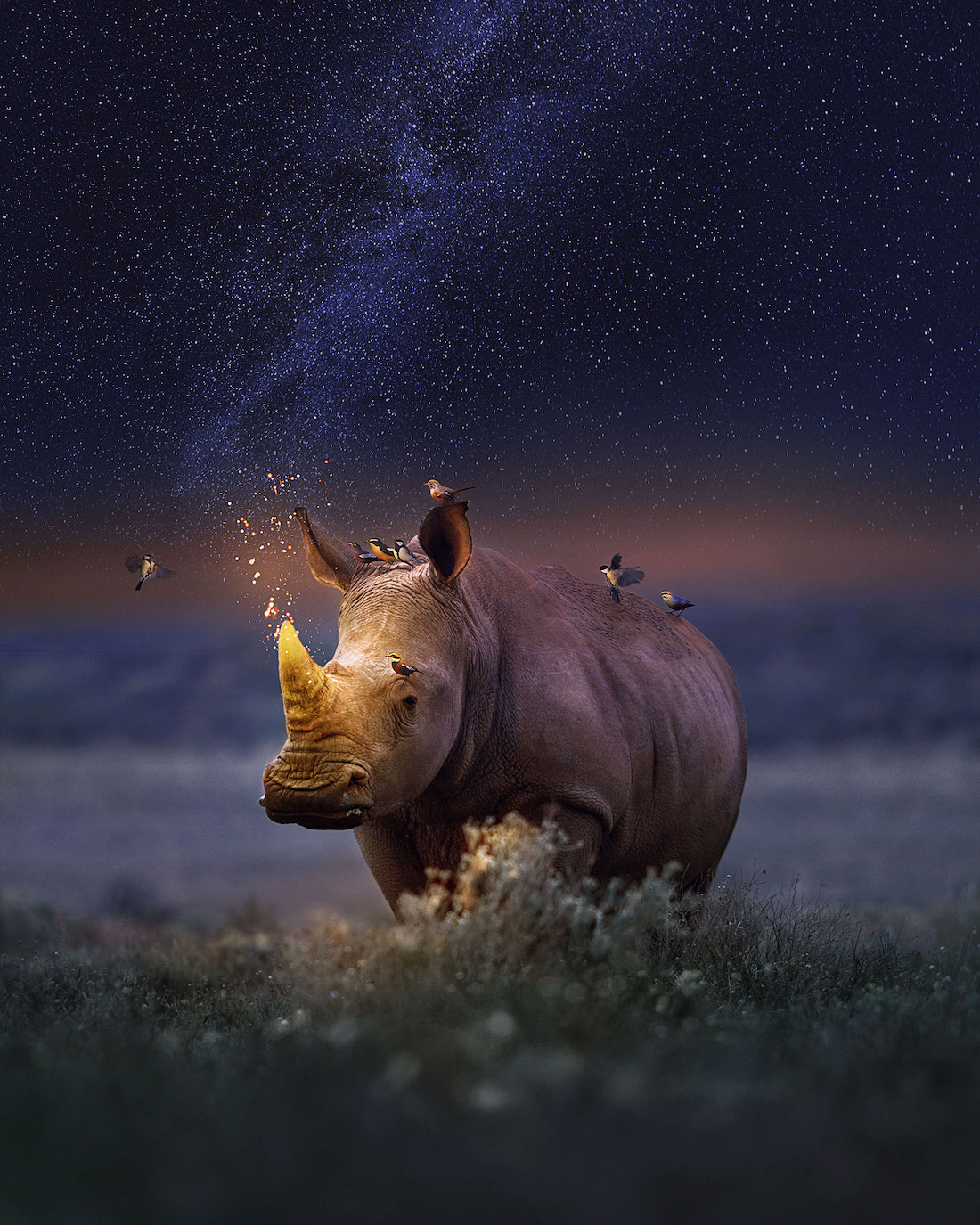
Rhinocorn
This post may contain affiliate links. If you make a purchase, My Modern Met may earn an affiliate commission. Please read our disclosure for more info.
Swedish artist Andreas Häggkvist crafts dreamy works of art with a dual purpose. His surreal animal portraits—which he refers to as “art with heart”—are both aesthetically alluring and packed with deeper meanings, perfectly pairing his artistic skills with his passion for the environment.
With experience in advertising and a background in graphic design, Häggkvist has mastered the art of sending a message. Through his whimsical work, he invites viewers to enjoy the harmonious scenes while also prompting them to ponder the bigger picture. “The goal with my art is not only to bring a little smile to the observer's face and create a good feeling,” he says, “but also make them stop and think for a moment about some of the things that is happening on, and to, our planet.”
Endangered and threatened fauna facing climate change, plastic pollution, and poaching are just some of the subjects featured in Häggkvist's eye-catching art. In each case, he touches on serious issues without overwhelming the viewer, culminating in a beautiful body of work that can “cause most people to stop, if even for just a moment, to have an emotional experience.”
We recently had the chance to speak with Häggkvist about his “art with heart.” Read our exclusive interview to learn all about his inspirations, lifelong love of animals, and artistic techniques.
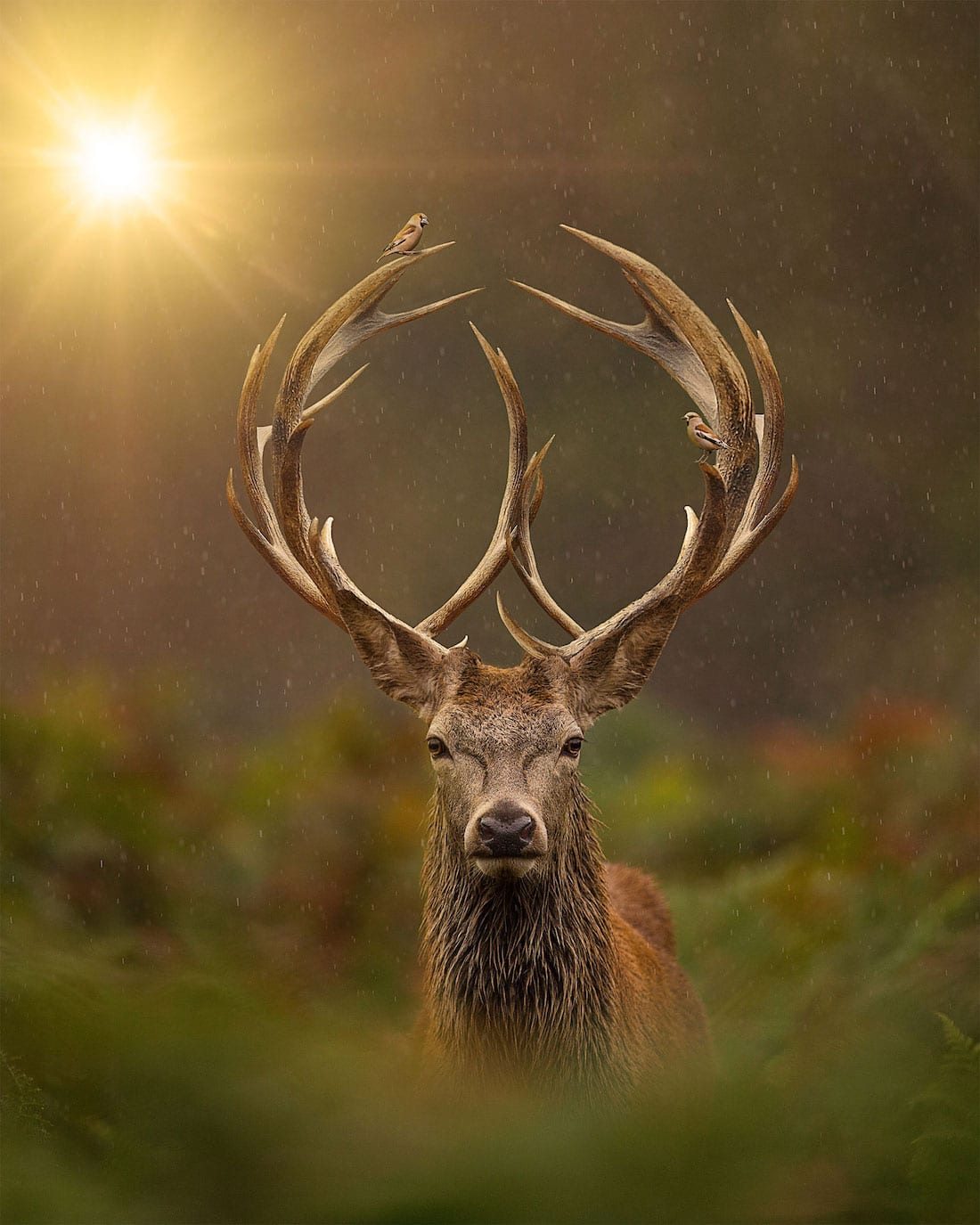
A piece of peace
What initially sparked your interest in animals—and, specifically, endangered species?
I grew up in a small town in north of Sweden, a place rich in forest and wildlife. Surrounded by animals since birth, they quickly became a big part of my life. We had lots of pets: dogs, cats, birds, and even a tiny little hamster named Conny. Our mother used to take us out on these long forest walks on the weekends, and come screaming every time even the smallest rabbit hopped by the window. We all loved animals.
As I grew older, raised in this environment, it just gradually transferred from family interest to personal passion. The niche of having more of a focus on the threatened creatures just comes from that, straight from the heart. I found, more and more, that their stories are important for me to cover, and for other people to hear, than say… Conny the hamster. It was never a strategy of any sort, not at all. It just gradually evolved from a lifelong love for all animals.
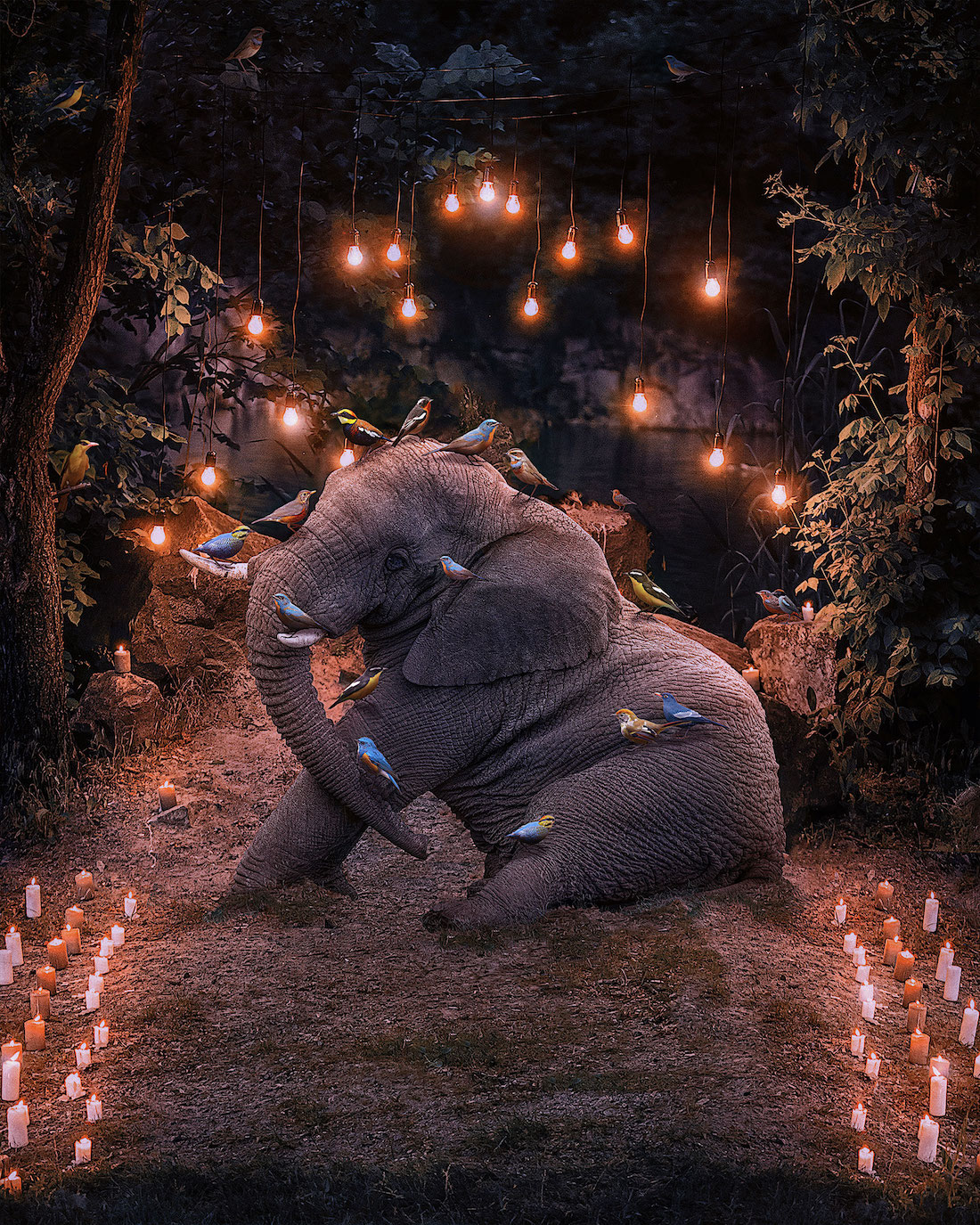
Center of attention
You worked in advertising before shifting to “art with heart.” What finally led you to make this major career decision?
I have always been a creator, a storyteller. I have always had a big interest in sending out what I feel are important messages. As a kid, I made my own comic books with made-up heroes, and I spent much of my teenage years making street art listening to hip hop. It’s always been about painting and trying to tell my stories. I really thought advertising would be my thing. And don’t get me wrong, I loved the creative side of the business! But I never quite adjusted to the selling part. I'd rather let the final artwork stay on my computer, as I made them, than tweak them to suit the client. You know, after so many years with the general feeling of unease that you’re constantly “hiding” your true self, you just have to realize that maybe this isn’t your thing.
In the mean time, I’d started making the art I wanted to do on my spare time. I’d set my clock to 4:30 and create for three hours before heading to work, and went straight home to work on my own art until midnight. Experimenting with different mediums or techniques, but (almost) always animals. Every day, year after year, just because, well, it was what I loved doing. And I loved it.
For the next 10 years, my friends worked hard trying to convince me to have exhibitions or sell my art. But that’s just what friends do, I thought. They’re supportive, no matter what. It wasn’t until I was “forced” by my friend Peter to start with Instagram that it all started to feel like, hey, maybe there are a few more people that actually like this. And since I had so much creativity in me, and stories to tell, I just went with it. And here we are. Art, from the heart. Art with heart.
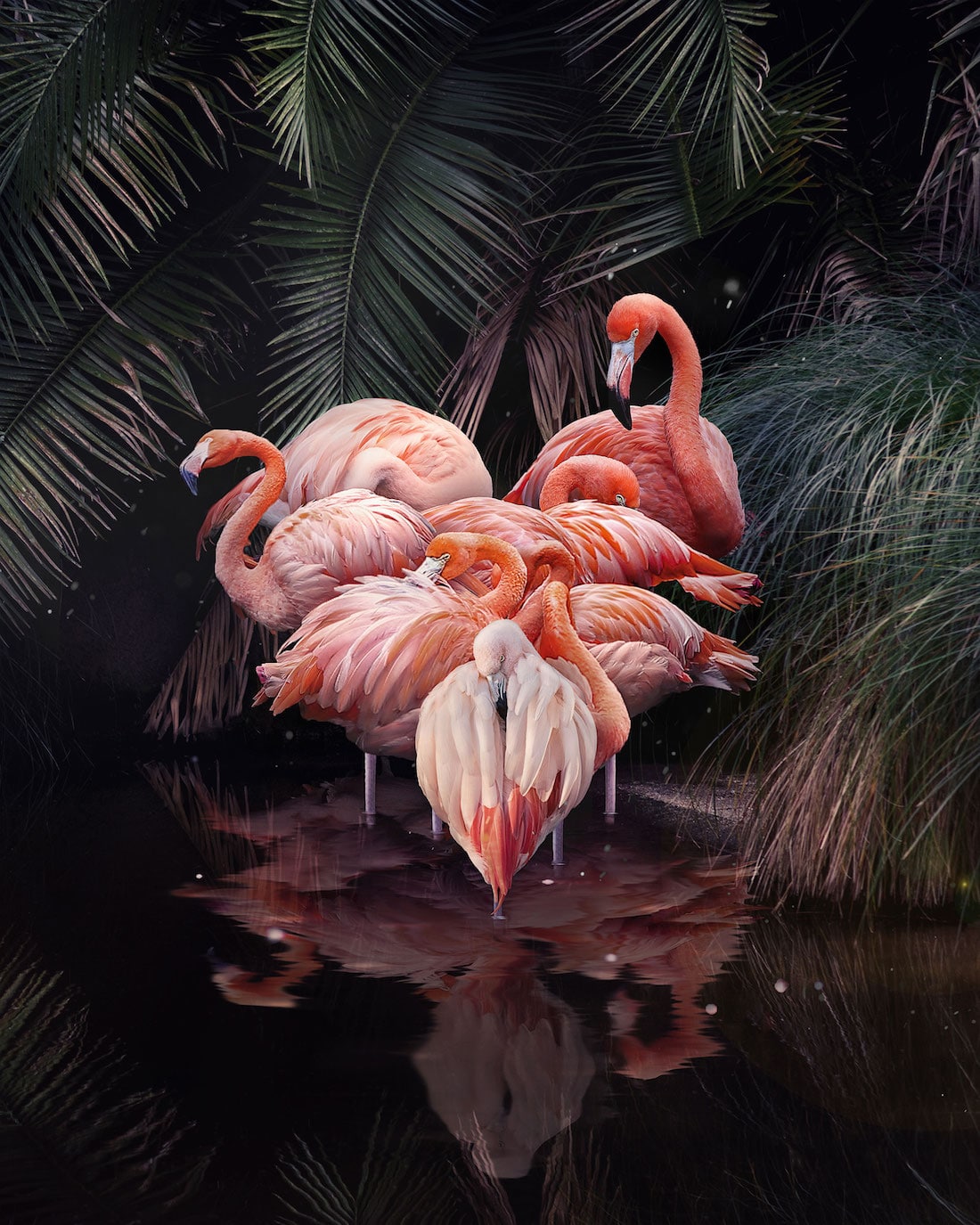
Flovemingos
How have your past professional experiences influenced your current work? What are the biggest differences between the two practices?
I'm a graduated Graphic Designer with over 10 years of professional marketing in me. This means trial and errors on how to strategically compose artwork, what specific symbols, icons, or colors appeal to certain people, how to write compelling stories, what content engages different kinds of people. There’s a lot in there that is of very good use no matter what business you’re in. Then, of course, we have work ethic. There are so many people looking for motivation to get creative, but just making stuff every day, 9-6, taught me that you aren't always in the mood to create. You just do it. Every day, for 10 hours straight. It's called discipline, and I really can't stress enough how important this is to get anywhere. Like everything else in life, it’s hard work, passion, and commitment that will make you successful—not motivation.
The big difference is: now it’s all me. Before we were a team, from project leaders managing clients to another creative director that could help you get out of a creative block. And even though I love having control of the whole process (and the results), its always challenging to be totally on your own.
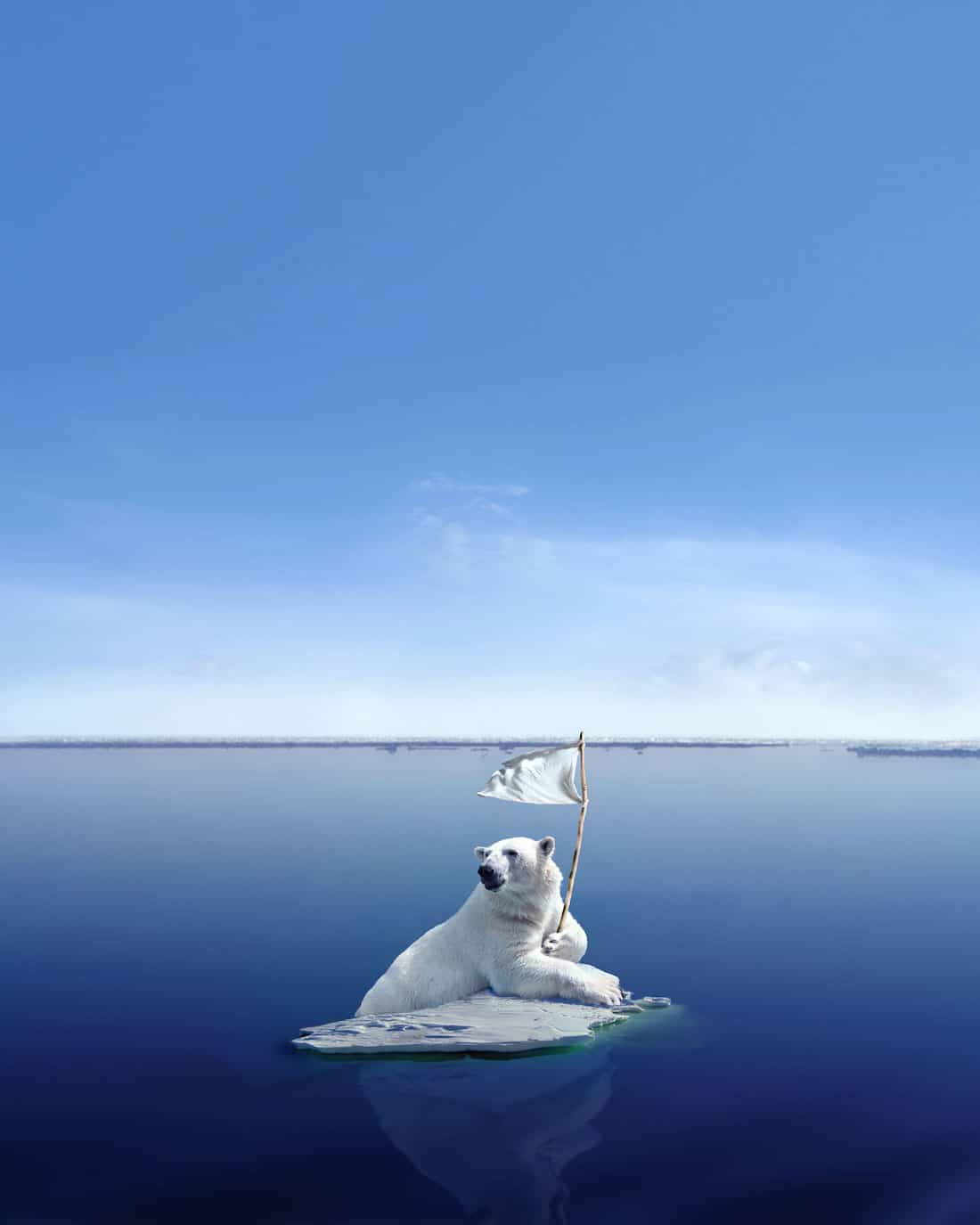
Peace please
Your work draws attention to serious animal rights issues through aesthetically pleasing imagery. Is it difficult to find a balance between uplifting viewers with “a sense of peace and love” while still making them think?
Yes, and that is certainly something I'm constantly struggling with; finding that perfect balance. I try to see my art as a conversation between two good friends, and how they influence each other. Imagine your best friend coming to you and shouting right after he just watched a serious documentary about animal abuse. You would probably not take him too seriously, writing it off as a phase. Or when your old high school teacher that just turned vegan starts posting scary videos on Facebook. You just scroll pass them, maybe even a little irritated. But if this good friend you have actually changes his lifestyle, gradually involves you, and makes you see the positive side of things bit by bit, there’s a pretty good chance that in the long run it will affect you. Sometimes maybe even without you knowing it. That’s what I want my art to be; that good friend who makes a little difference in your life, without ever forcing something on you.
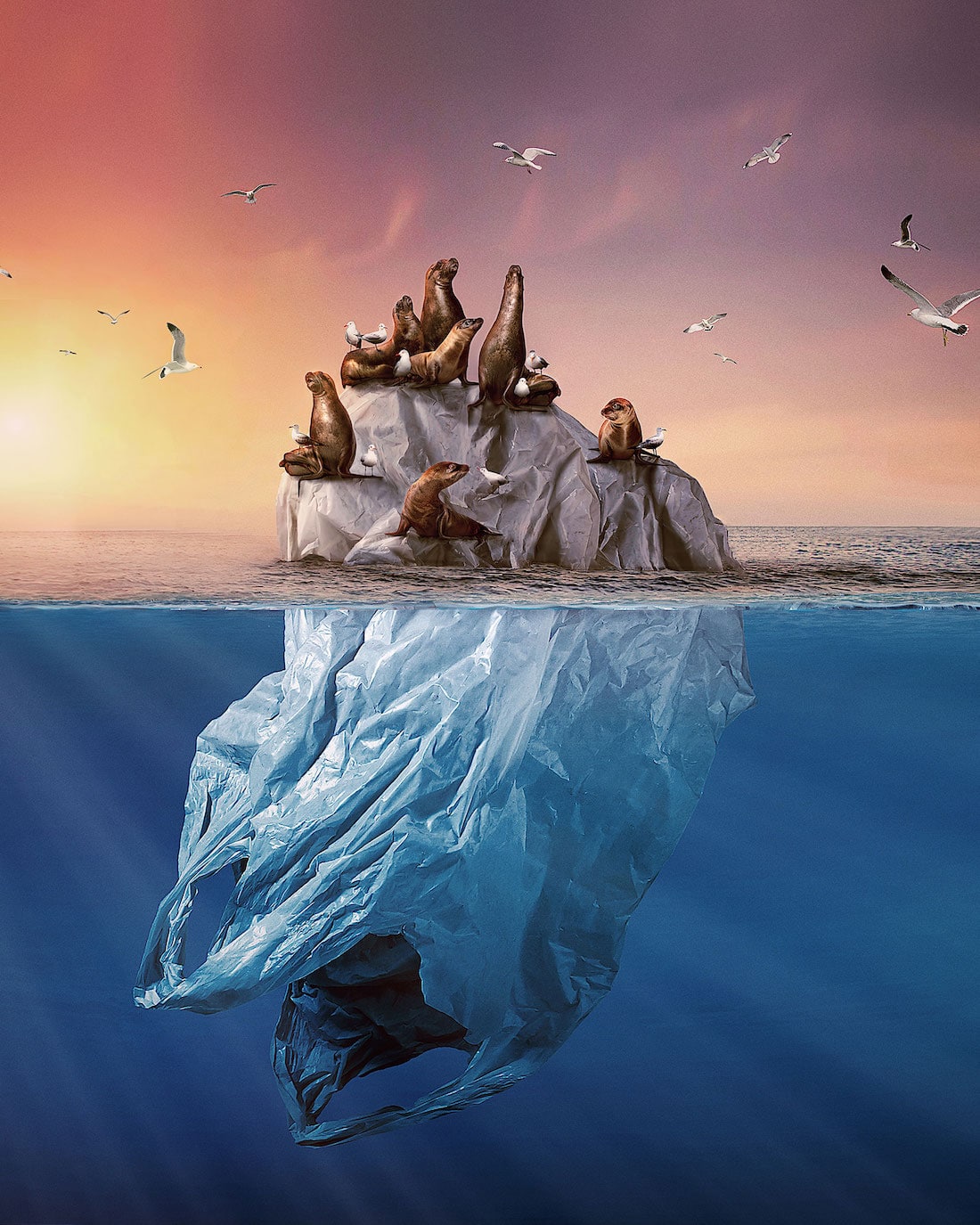
Sea our future
Which of your series do you think has had the strongest impact, and why?
So far, its definitely been the more “commercial” pieces. My Time's running out made it to Australia's biggest newspaper just days after I posted it. Ice Beargs was reposted by Ideas Powered, an important EU initiative for making a change with creativity, and my piece Lights out got me in contact with non-profit organization Give Back To Nature. These pieces all sprung from from my advertising way of thinking, and, not surprisingly, this kind of art does really well on social media. They hit you like a glove in face, before you even had the time to scroll past them!
I’m so happy they are appreciated, but, in the long run, I’m hoping to have a different answer for this question. I want to be able to say, “It’s that sunlit deer with a peace sign for antlers, or those beautiful pink flamingos forming a heart. Because that particular piece hung in someone's living room for over 10 years, making it a piece for conversation between friends over countless dinner parties.”
I’m not here to make a quick impact. I want my artworks to be a topic of conversation for years to come. Luckily, I’m a very patient man.
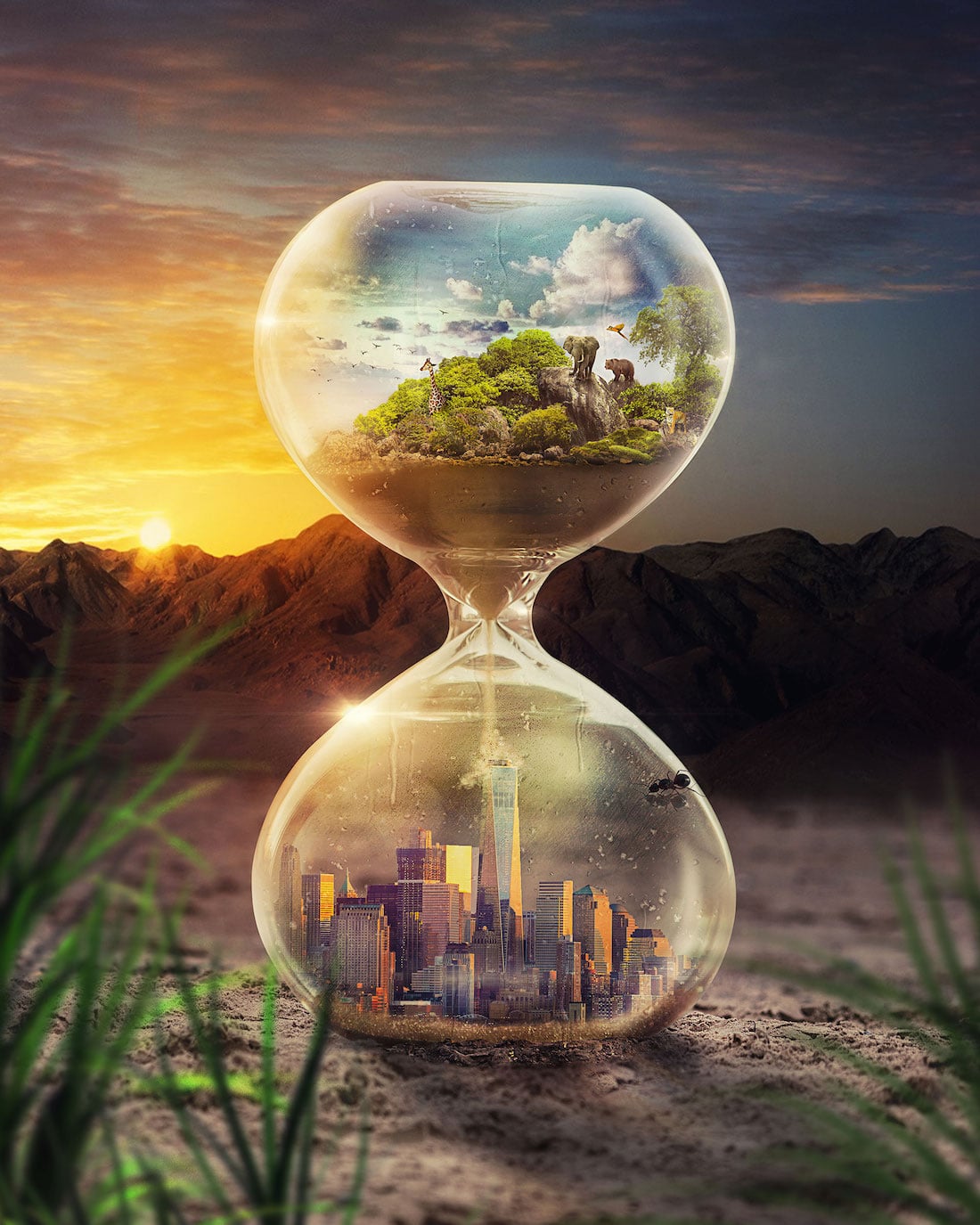
Time's up
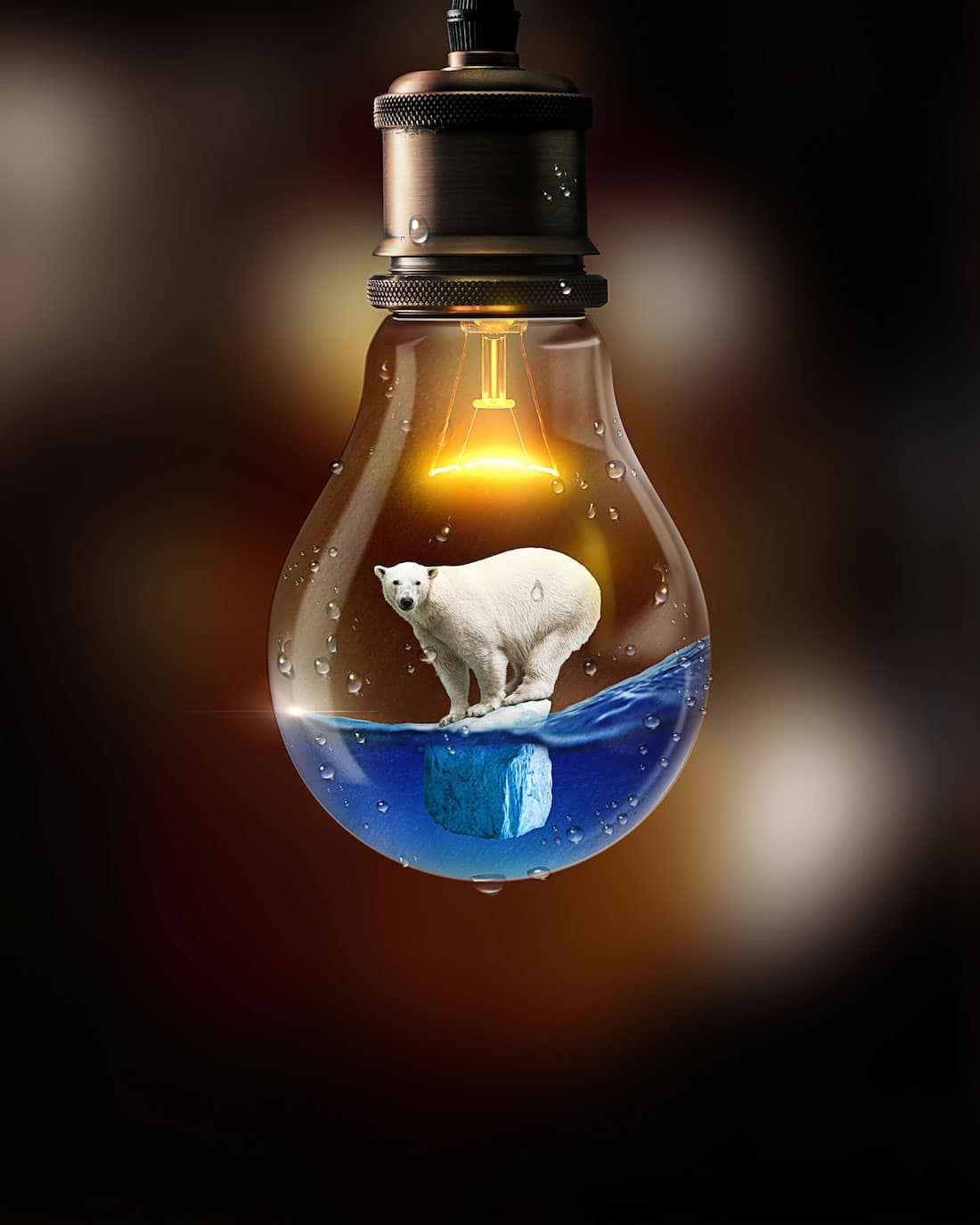
Lights out
From a technical standpoint, how do you go about crafting your composites?
I like to have a relationship with the animal before painting it, a connection, even if just in spirit. If I take the time to absorb an animal’s individual story, it’s so much easier to find how to approach the subject, because it comes from within. So, I actually always start with Google, trying to read up on as much information about the creature as possible before taking the more creative steps.
Then, before starting the real thing, I quickly sketch up a draft for the scene on paper, very roughly. Make no mistake, these are really bad. But it actually helps me a lot, getting a feeling of the whole scene without the limitations of software, windows, colors, or brush width. Just pure, old-school free thinking. I think people sometimes are too quick to head for their digital software; it can actually become a creative obstacle.
Once finished with this, I'll start to outline the scene in Photoshop, and gradually fill it with my own photos, collaborations with photographers, standard stock images, and more and more—digitally “painting” by hand. We certainly live in an amazing era where all this is possible to combine and finalize into one product, and I’m kind of utilizing as many aspects of it as I can. It really satisfies my creativity to be able to be so versatile without any restrictions.
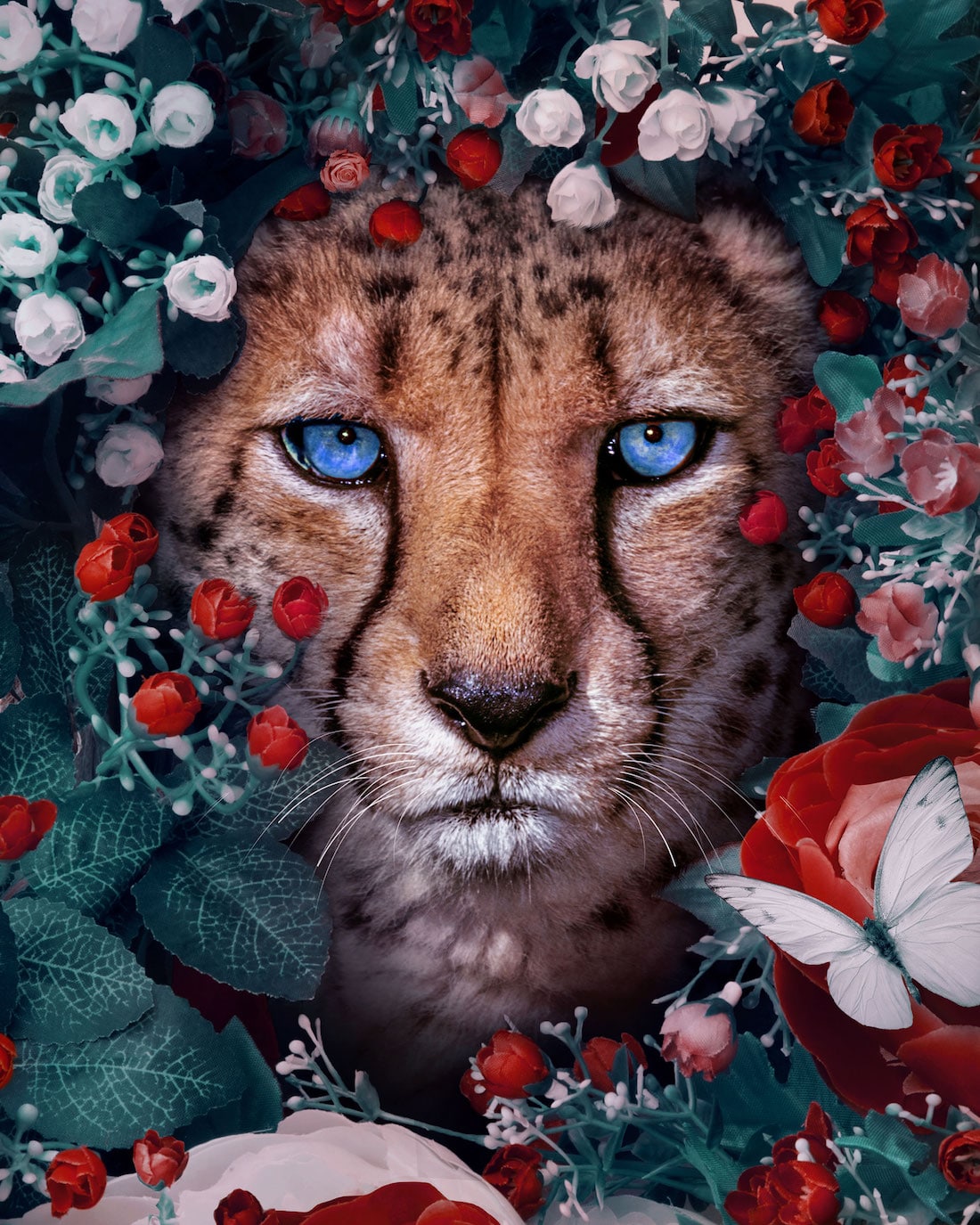
Behind Blue Eyes
What are your hopes and plans for the future of your work?
Of course, I do wish that my art will continue to not only bring a smile to the viewer's face, but also makes them stop and think for a moment about what is happening to our planet. I’m just getting started, but have already landed collaborations beyond my wildest dreams. When WWF contacted me asking me to be a World Hero Ambassador, I was speechless. And I just finished a collaboration with Give Back To Nature that resulted in 555 planted trees in areas ravaged by deforestation. I am constantly trying to figure out how to make an even bigger positive impact on our planet with my work.
The plan is pretty clear: passion, commitment, and hard work. Every day. It has always been. The hope is that those numbers of saved elephants or planted trees will be 10 times as big in the future. And then 10 times as big as those. And I'm so eager to explore creative ways to reach those goals. I've had requests for putting my work on everything from wedding dresses to vintage furniture, and the only thing I can say is: anything is possible if you believe it is. And we will make the world a little bit better together.
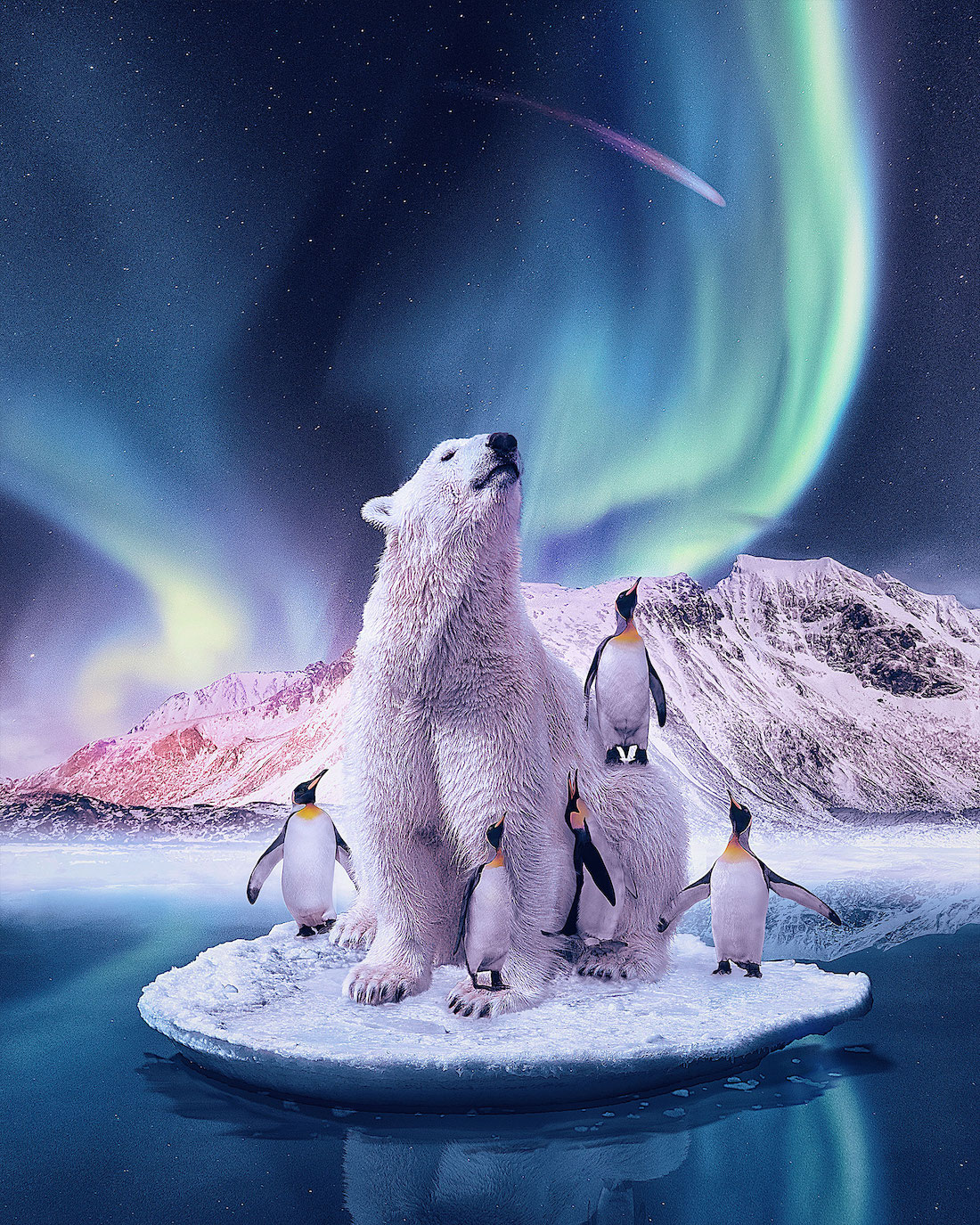
A falling star
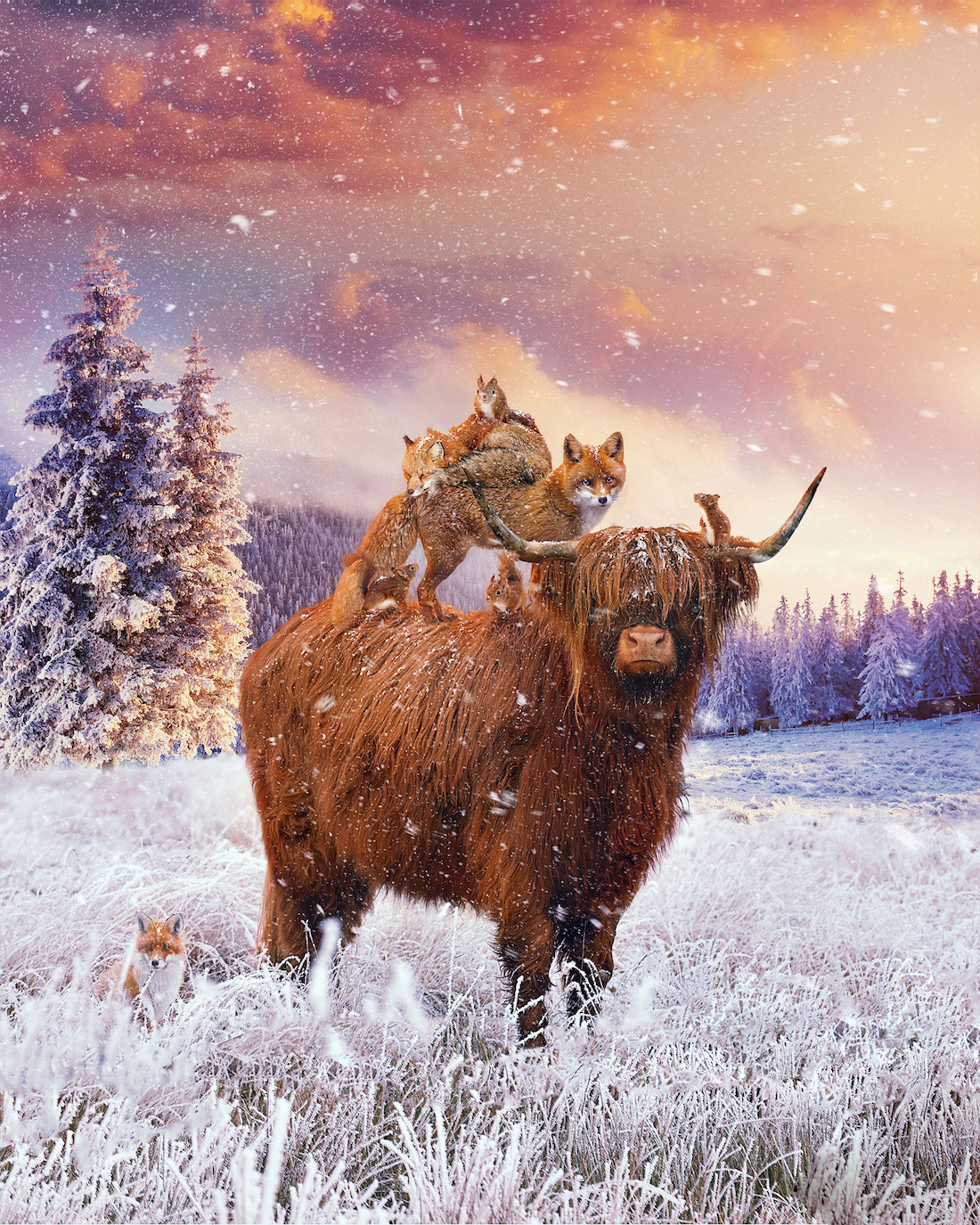
Fluffy cow
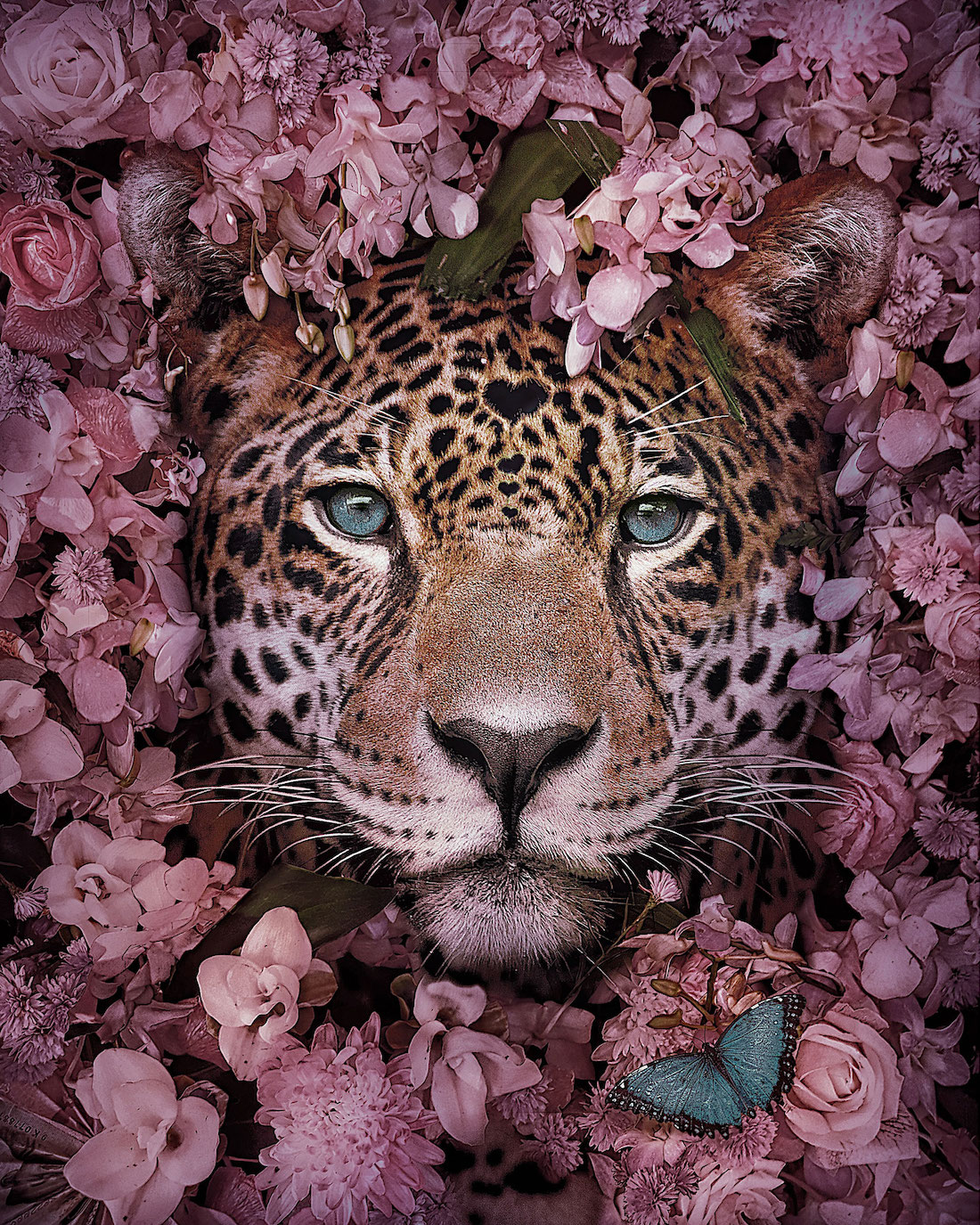
Lovepard
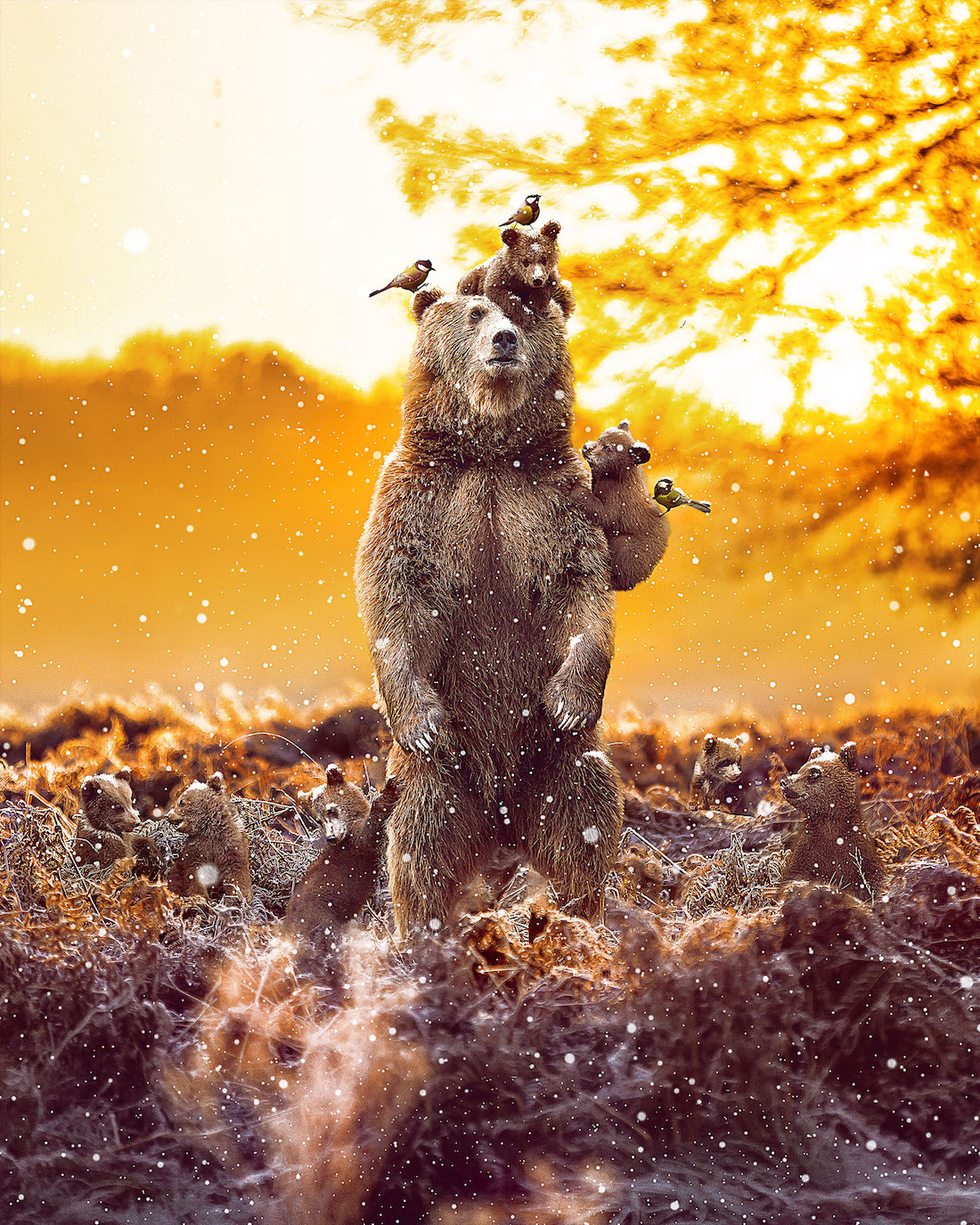
Summer snow
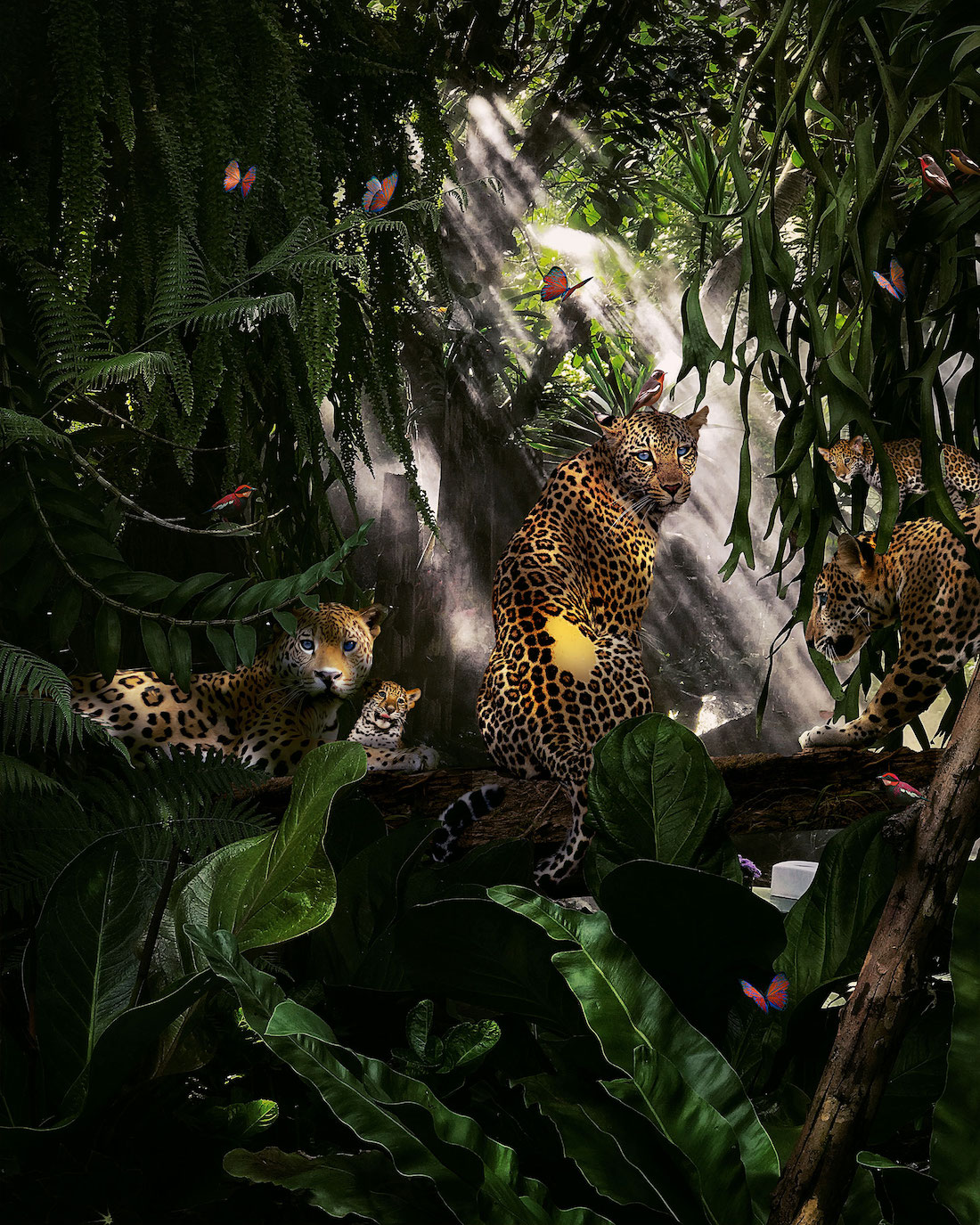
Lost spots

Lovebirds
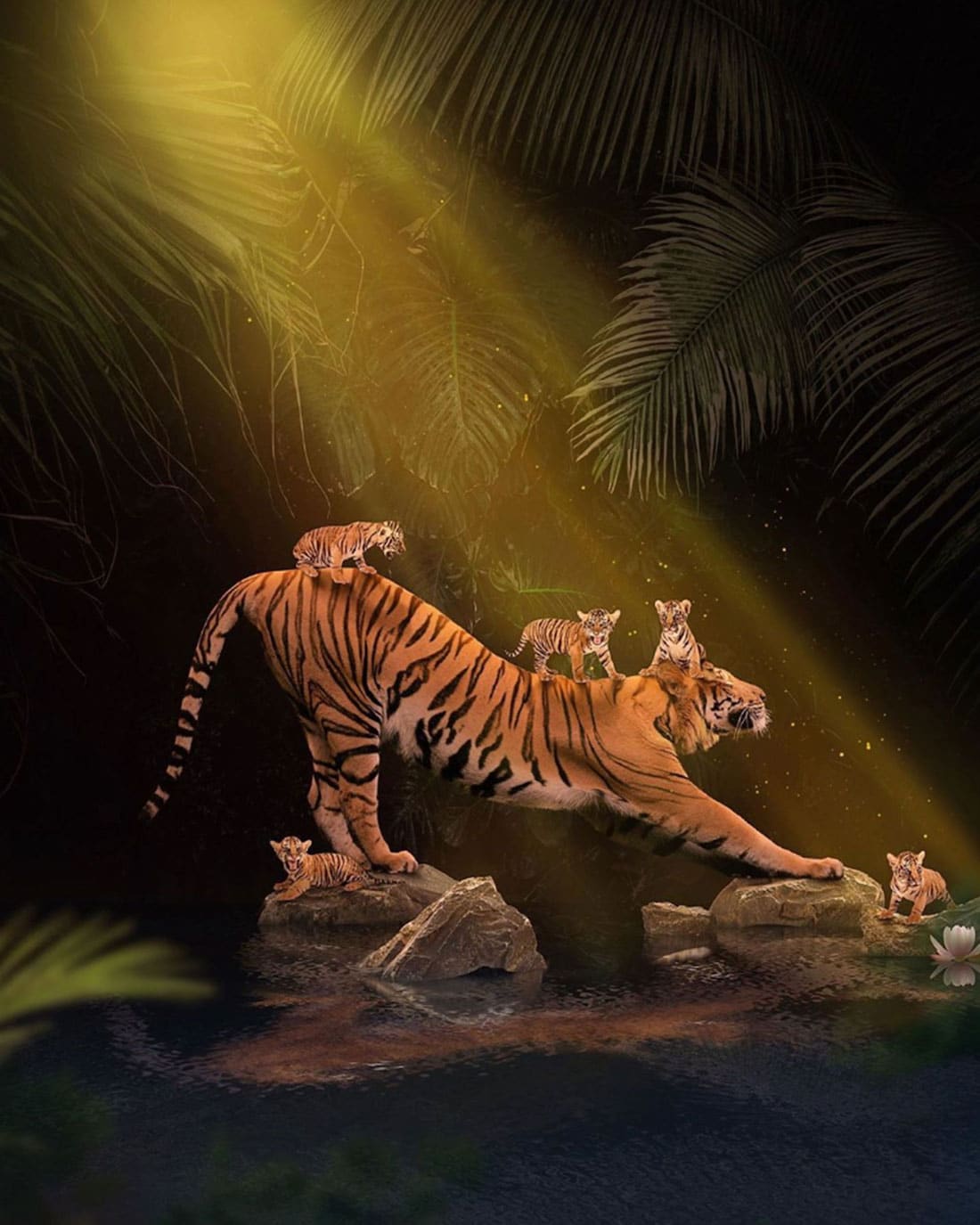
Rise and shine
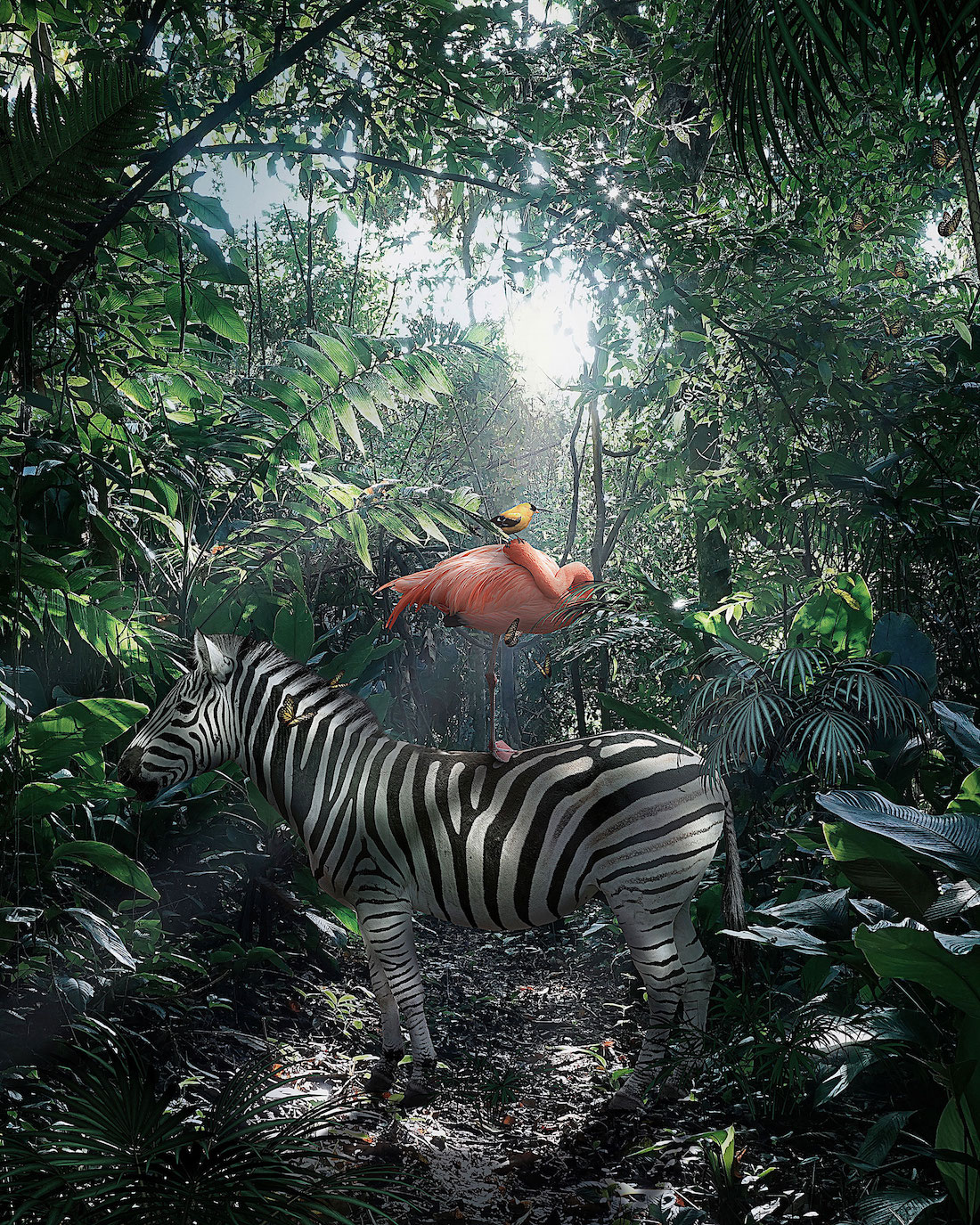
Back up
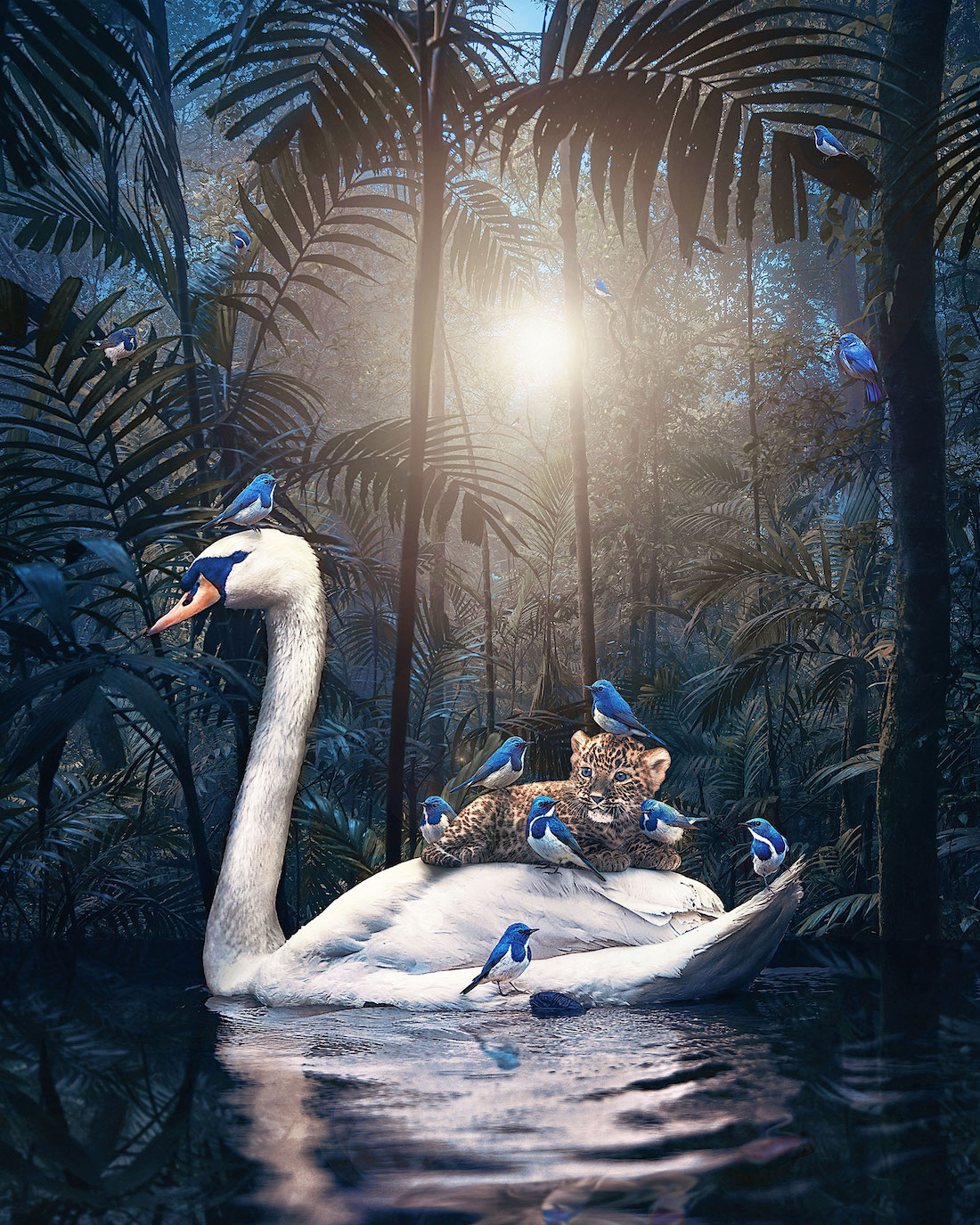
Swan lake
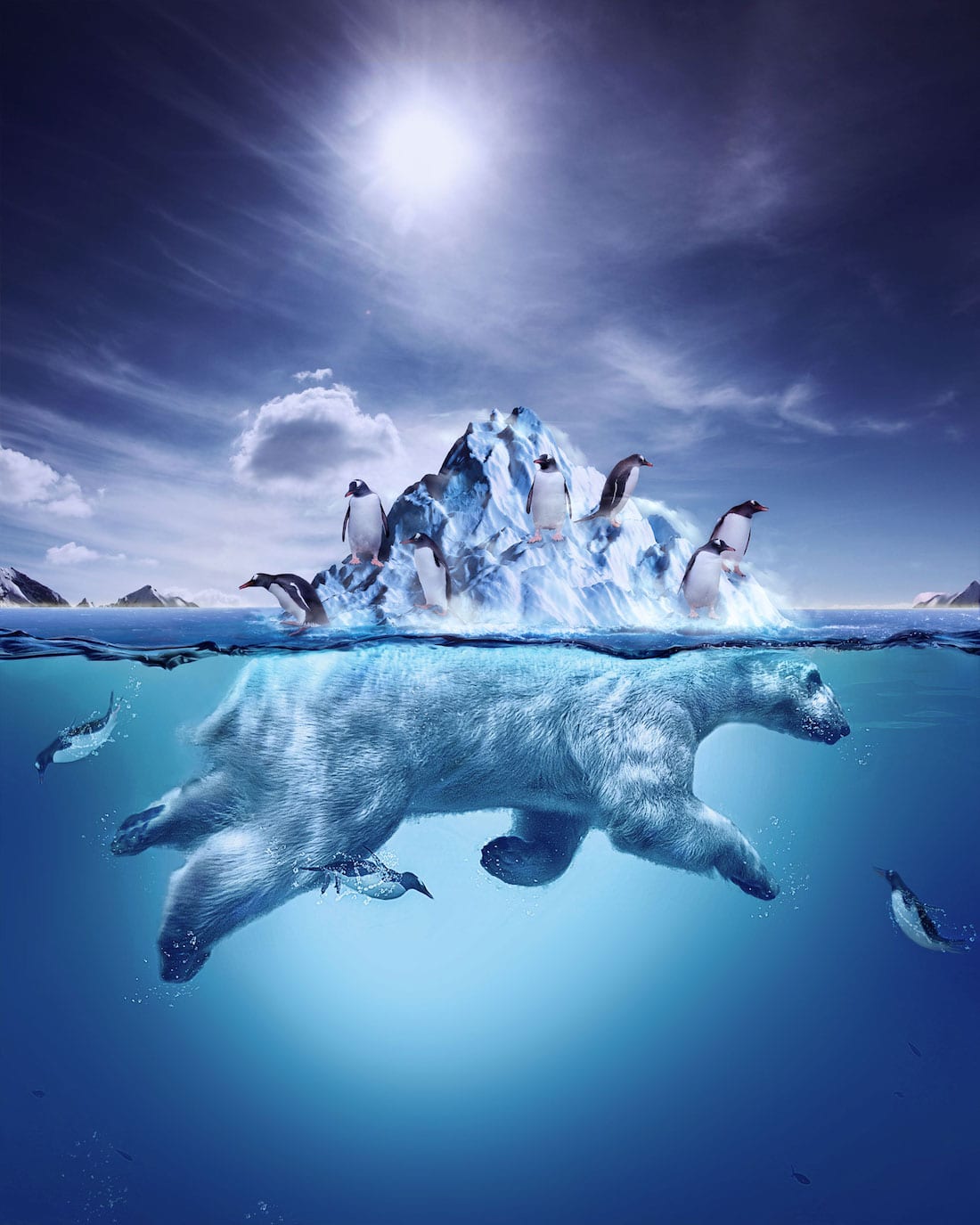
Icebearg
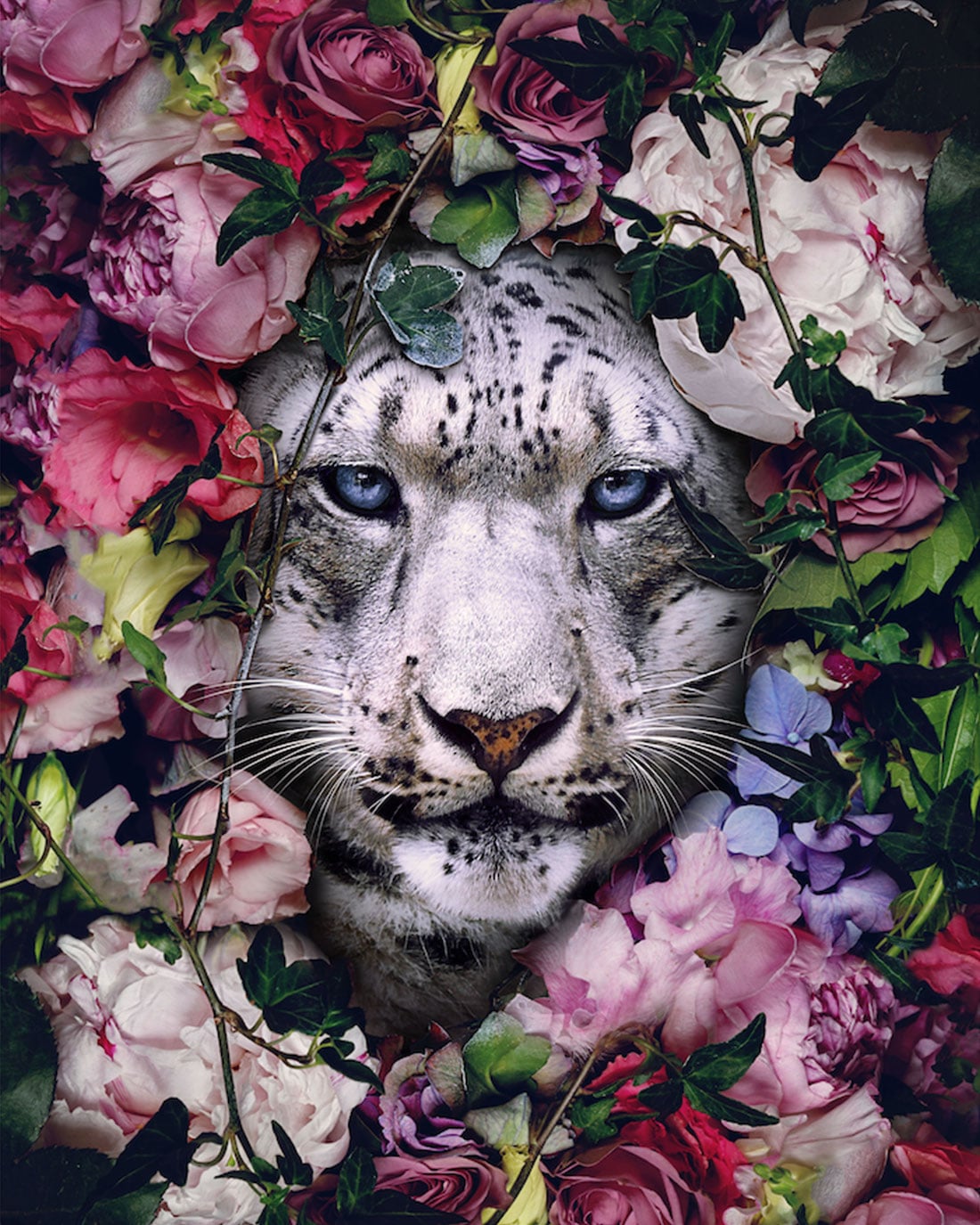
fLOVEr
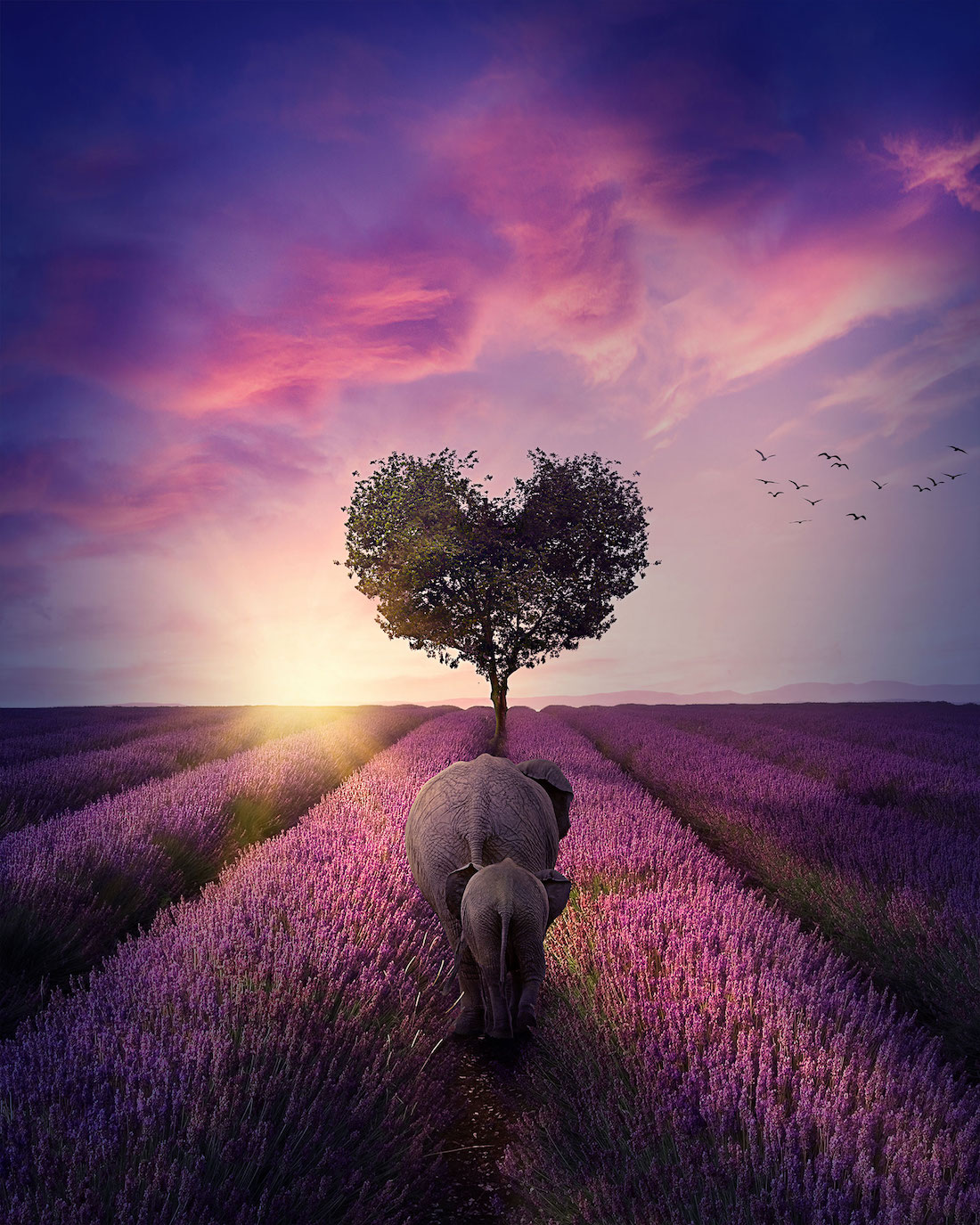
Towards love











































































